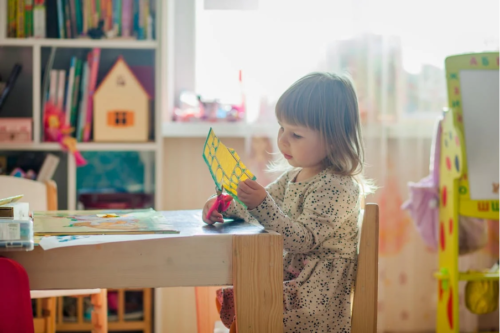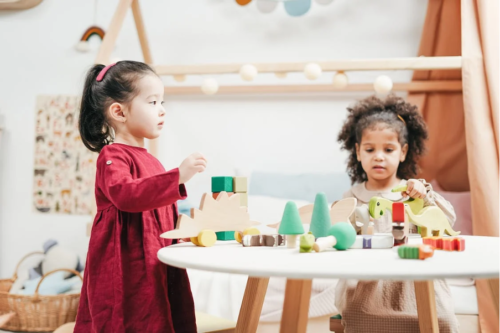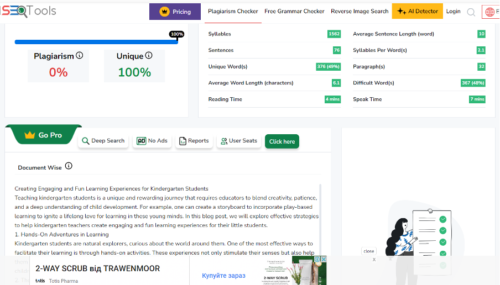Creating Engaging and Fun Learning Experiences for Kindergarten Students
Teaching kindergarten students is a unique and rewarding journey that requires educators to blend creativity, patience, and a deep understanding of child development. For example, one can create a storyboard to incorporate play-based learning to ignite a lifelong love for learning in these young minds. In this blog post, we will explore effective strategies to help kindergarten teachers create engaging and fun learning experiences for their little students.
1. Hands-On Adventures in Learning
Kindergarten students are natural explorers, curious about the world around them. One of the most effective ways to facilitate their learning is through hands-on activities. These experiences not only stimulate their senses but also help them grasp abstract concepts. From tactile art projects to interactive science experiments, hands-on activities engage children’s imagination and promote cognitive development.

2. The Magic of Storytelling and Reading
Storytime is a cornerstone of early childhood education. Choose captivating picture books with vibrant illustrations and simple text to capture their attention. Engage the children by asking open-ended questions during the story, encouraging them to think critically and express their thoughts. After the story, facilitate discussions to build their vocabulary and comprehension skills.
3. Learning Through Play
Play isn’t just enjoyable for kindergarten students; it’s essential for their holistic development. Infuse learning into play by creating learning centers that cover various subjects. Building blocks for math, dramatic play for social skills, and puzzles for critical thinking are just a few examples of how play can be a powerful educational tool.
4. Harmonizing Music, Movement, and Learning
Music and movement can transform any classroom into a dynamic learning environment. Through catchy songs and interactive dances, children learn important concepts such as counting, colors, and body parts. This multisensory approach enhances memory retention and overall engagement.
5. Structured Learning Centers
Creating distinct learning centers within the classroom helps channel children’s curiosity and energy effectively. These centers, each focusing on different subjects or skills, provide students with opportunities to explore and learn independently. Rotating through centers keeps the activities fresh and exciting.
6. Thematic Adventures
Thematic units are a fantastic way to tie various subjects together while catering to children’s interests. Choose a theme, such as animals or community helpers, and explore it through reading, art, science experiments, and more. This approach allows students to dive deep into a subject, fostering a comprehensive understanding.
7. Learning in the Great Outdoors
Nature offers an unparalleled learning environment for kindergarteners. Outdoor activities, such as nature walks and science observations, not only teach valuable lessons about the environment but also promote physical activity and a sense of wonder.
8. The Power of Positive Reinforcement
A positive classroom atmosphere is crucial for learning to thrive. Use praise and positive reinforcement to celebrate accomplishments, both big and small. This fosters a sense of achievement and encourages children to take risks in their learning journey.
9. Adaptable Approach
Kindergarten students have diverse learning styles and attention spans. Being flexible and patient is key to accommodating their individual needs. Provide breaks when necessary to prevent frustration and allow time for exploration.
10. Building Bridges with Parents
Involve parents in their child’s education by maintaining open communication. Share updates, progress, and ways they can support learning at home. This collaborative approach strengthens the connection between school and home.
11. The Beauty of Collaborative Activities
Encourage teamwork and collaboration through group activities. These experiences teach vital social skills, communication, and problem-solving abilities while fostering a sense of belonging within the classroom community.

12. Balancing Technology and Education
Incorporate educational technology thoughtfully, selecting age-appropriate apps and interactive tools. While these resources can enhance learning, they should not replace hands-on experiences or face-to-face interactions.
13. Venturing Beyond the Classroom
Field trips and guest speakers offer real-world connections to classroom learning. These experiences spark curiosity and provide students with a broader perspective on the concepts they’ve been exploring.
14. The Beauty of Routine and Structure
Kindergarten students thrive on routine and predictability. Establishing a consistent daily schedule that includes learning, play, snacks, and rest ensures a balanced and organized learning environment.
Conclusion
Teaching kindergarten is a remarkable opportunity to nurture young minds and set the stage for a lifelong love of learning. By incorporating hands-on activities, play-based learning, and a variety of engaging strategies, educators can create a vibrant classroom where children thrive academically and socially. Through positive reinforcement, collaboration, and a holistic approach to education, teachers can leave a lasting impact on their student’s educational journey.

